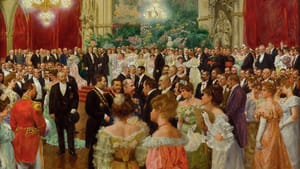Stay in the Loop
BSR publishes on a weekly schedule, with an email newsletter every Wednesday and Thursday morning. There’s no paywall, and subscribing is always free.
A melting pot that periodically boiled over
The Philadelphia Orchestra's Vienna Festival

No city is as musical as Vienna, home of Mozart, Beethoven, Mahler, Strauss, Schoenberg, and many other composers and performers. The great music written in that city was influenced by the influx of cultures from the outlying regions of the Austro-Hungarian Empire, but that influx simultaneously aroused prejudice against outsiders: Bohemians, Bosnians, Hungarians, and Jews.
Franz Josef bore the title Emperor of Austria and King of Hungary, and those two entities coexisted as equal partners in the dual monarchy, but Karl Lueger, the mayor of Vienna, contemptuously called Hungary’s capital city Jude-pest. Lueger, mayor from 1896 until his death in 1910, ran repeatedly on anti-Semitic platforms and barred Jews and other minorities from city jobs and restricted the immigration of Russian Jews when they were fleeing pogroms in their home countries. He also transformed Vienna into an industrial-age metropolis, building electric and gas works and introducing streetcars.
“Why can’t these people learn our German language?” Viennese asked about out-of-towners, and Ferenc Liszt and Imre Kálmán had to change their first names to Franz and Emmerich to gain acceptance.
Hitler praised Lueger as a role model, and an uncomfortably large number of Viennese welcomed Hitler back as an occupier in 1938. The Nazis who marched into Vienna encountered no resistance, and citizens stood by while Jews were forced to kneel and scrub city sidewalks. In fact, Vienna had more bigotry than Berlin. It is an unpleasant history that today’s Viennese acknowledge, as they work to correct it.
A complex legacy
Any concert series that wants to celebrate Viennese music should illustrate the complex history of Viennese music and comment on the city’s troubled past. The pieces Yannick Nézet-Séguin chose for the Philadelphia Orchestra’s current festival do so.
A prime example is Charivari, a dissonant parody of a Strauss polka by contemporary composer HK Gruber. His piece is a rebuke to Vienna’s historic pattern of seeking comfort, even during the most horrifying periods of history. It rips away the gemütlichkeit mask that seems to say: “Why think about bad things? Smile. There’s no cause for alarm as long as we can pour champagne and dance the waltz.” (The Viennese didn’t have a monopoly on this thinking, of course: Irving Berlin said basically the same thing during the Depression when he wrote, “There may be trouble ahead. . .so let’s face the music and dance.”)
Some of the pieces considered to be tributes to Vienna’s beauty actually were regretful looks back.
The heyday of the waltz was in the early 19th century, so when Johann Strauss composed his immensely popular waltzes in the latter part of that century he was indulging in nostalgia for a more innocent Vienna — “The Beautiful Blue Danube” was turning dirty brown when he wrote his tribute.
Illustrating a long history
In that same period, Gustav Mahler had to renounce his Judaism and turn Catholic in order to serve as conductor of the Vienna Philharmonic. Even after that, newspaper columnists denounced him for being Jewish. Critics attacked Mahler when he arranged Beethoven’s String Quartet No. 11 for orchestra in 1899. They called it a desecration; Nézet-Séguin included it prominently in this festival.
Nézet-Séguin chose most of the festival’s pieces to illuminate larger points. He included Beethoven’s Piano Concerto No. 4 because that was the composer’s final appearance as a concerto soloist, in 1808, before his increasing deafness prevented those performances during the remaining 19 years of his life. The festival ranges from Haydn’s Drumroll Symphony from 1795 to Webern’s Im Sommerwind (In the Summer Wind), a romantic tone poem that got its world premiere by the Philadelphia Orchestra in 1962.
A major piece in the festival’s second week is Bruckner’s Fourth Symphony, which evokes the mountain scenes and peasant surroundings of the composer's Austrian home. The last weekend includes the familiar Schumann Piano Concerto and the Symphony No. 2 by Brahms, one of Vienna’s most beloved sons. This is his most serene and cheery symphony, providing a contrast to the troubling issues raised earlier.
Clearly, this is a festival that causes us to think as well as basking in lush sounds.
For Victor L. Schermer’s review of the January 13-16 concerts, click here.
For Linda Holt's review of the January 21-22 concerts, click here.
For Dan Rottenberg's review of the January 28-30 concerts, click here.
For Victor L. Schermer's review of the January 28-30 concerts, click here.
What, When, Where
Vienna Festival by the Philadelphia Orchestra, Yannick Nézet-Séguin conducting. Verizon Hall, the Kimmel Center, Broad and Spruce Streets, Philadelphia. 215-893-1999 or philorch.org.
January 13-16: Strauss, Tales from the Vienna Woods; Beethoven, Piano Concerto No. 4; Beethoven, String Quartet No. 11 ("Serioso"), orchestrated by Mahler; Gruber, Charivari.
January 21-22, 26: Haydn, Symphony No. 103; Bruckner, Symphony No. 4.
January 28-30: Webern, Im Sommerwind; Schumann, Piano Concerto; Brahms, Symphony No. 2.
Sign up for our newsletter
All of the week's new articles, all in one place. Sign up for the free weekly BSR newsletters, and don't miss a conversation.

 Steve Cohen
Steve Cohen